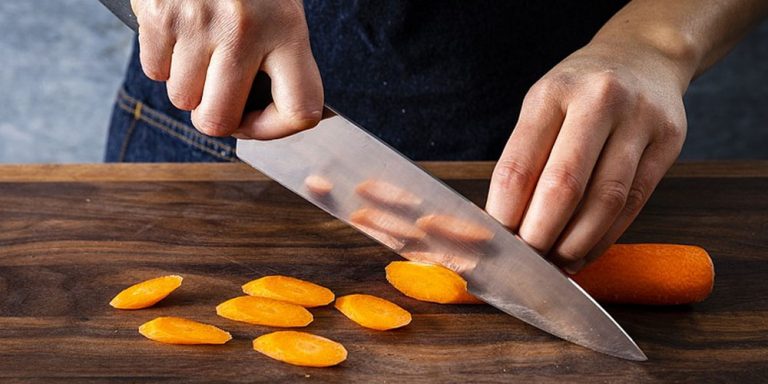
What essentials do you want for your kitchen? Is your kitchen lacking some basic knives? And you want to buy it but you are not able to make the best choice, Learn everything there is to know about purchasing the best knife and how it can help you improve your cooking. What could be better than getting these knives on sale? Now is the time to get your hands on kitchen knives on sale cutlery and more. However, before you do that, you should be aware of the five guidelines for selecting the best knife.
What to Consider when Purchasing a Kitchen Knife?
When shopping for chef knives, keep in mind that a knife must feel good in your grip. The kitchen tools improve the skill of preparing meals making it much more enjoyable. Choosing the best chef’s knife becomes a simple task once you’ve narrowed down your criteria. Size, material, style handle, and balancing are the most significant factors to consider while purchasing a knife.
Size
Make note of things you require in your kitchen before you begin to worry over how trendy it is. If you are simply the ones who cook at home and doesn’t frequently cut the whole chickens or veggies, a knife length of 8-10 inch should suffice. Many non-industrial counters and chopping boards are really not equipped to hold too much more, so choose a size that feels good in your grip and is easy to manoeuvre in your workspace.
Style
Everyone have their individual preferences, therefore you’ll have to choose between German and Japanese knife. Each style has advantages and disadvantages.
German knives
Full-tang, thicker blade, bolster are common features of German knives. Making it razor-sharp while also being durable. The bolster, sometimes termed as the shank, is the broad section of the knife that lies between both the handle and the blade. It can give a knife more strength and stability while also protecting the chef’s fingers. They are very less likely to break due to their thicker blade. They are also less efficient at performing delicate cuts as a result of this.
Japanese knives
There is no bolster on Japanese knives, as well as the tangs differ because of different manufacturers. They usually have an angle of degree 15 to 18 that makes it extremely sharp. They can be used for delicate tasks as they have thinner blades, but they can’t handle heavy-duty tasks.
Material
The type of material you choose has a significant impact on both the blade’s longevity and the quality of its blade. Stainless steel and High Carbon are the two most common steel used to make blades.
Carbon Steel and Stainless Steel
Carbon steel is stronger, sharper, and has more durability than stainless steel; nevertheless, it takes more work to keep it from corrosion or discolouration. Stainless steel is indeed the less expensive alternative, is easier to maintain, and does the job effectively, but it does not last as long as carbon steel. As stainless steel is slightly softer, it requires constant sharpening to maintain a smooth, sharp blade.
Handling
A comfortable and confident grasp on the knife is essential for having outstanding culinary skills. This entails choosing a grip that is appropriate for the shape and size.
Weighting
The last key consideration while choosing the best kitchen knife is weight. The total balance of the knife is determined by how evenly its weight is divided between both the blade and the handle.
The proper balance point for knives with a blade length of 8 inches or more must be exactly where its blade joins the handle, which means the handle and blade should weigh almost the same. You should consider the most weight in the handle rather than the blades for smaller knives such as a three-inch utility or pairing knife meant for finer chopping jobs.
Final Words
Remember that your kitchen’s knife is by far the most significant item in your kitchen, and if properly cared for, it can simply be with you for 25 years or longer. So, instead of getting too caught up in the pricing, choose a knife that makes you delighted to cook.